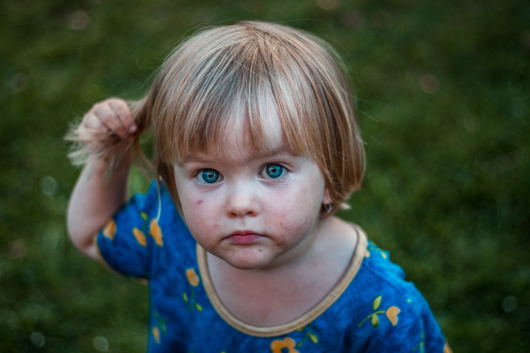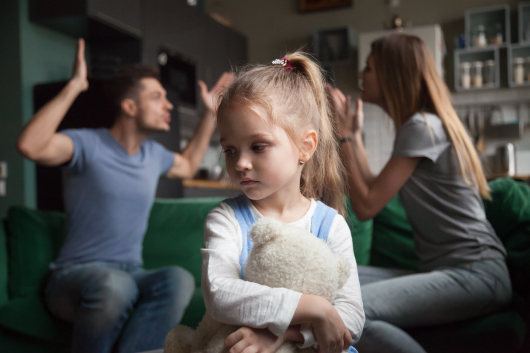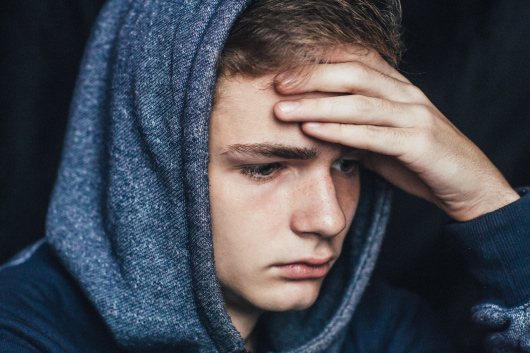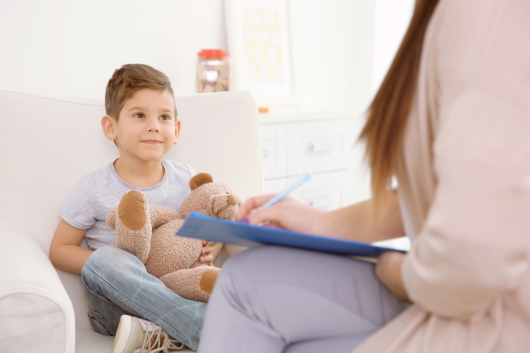Childhood Trauma in Social Work

According to the National Association of Social Workers (NASW), a majority of children have experienced at least one childhood trauma. Often termed Adverse Childhood Experiences, or ACEs, these traumatic events can carry harmful aftermaths well into adulthood. Social workers can be a significant part of both prevention and care.
With proper intervention, many times childhood trauma—and its lingering repercussions—can be averted. Experts recognize social workers can help not only to prevent childhood trauma but to alleviate its lingering effects. According to NASW, social workers can, “identify both current and past victimization,” and possibly help prevent future problems.
As medical, community and government groups look to mitigate the rising incidences of trauma, social workers’ intervention has never been more essential. Prevention necessitates broad involvement across all social strata. According to a National Institutes of Health (NIH) article, “a paradigm-shifting evolution in . . . mindsets, policies and practices is required,” to ensure well-being in children.

Childhood Trauma: What Are ACEs?
The U.S. Department of Health and Human Services (HHS) defines ACEs as, “traumatic events occurring before age 18.” The range of these negative circumstances a child may experience includes:
- Emotional, physical, or sexual abuse
- Neglect
- Parental divorce
- Mental illness of a parent
- Living in a home with domestic violence
- Living with an alcoholic or drug addict
- Living in a household with an incarcerated parent
In addition to these long-established categories, ACEs are now also classified to include economic deprivation, violence in the community and bullying or discrimination. Frequently in children, multiple types of childhood trauma will occur in parallel. The more types of trauma a child endures, the higher their ACE “score.”
The effects of ACEs commonly linger throughout adolescence and adulthood. According to HHS, the more childhood trauma a child experiences, the greater their risk for health consequences and negative behaviors.

Childhood Trauma During Current Worldwide Crises
Beyond the distress children may experience from their immediate circumstances, the state of the world following the rise of COVID-19 has ushered a sense of instability among children. The global pandemic, social discontent and slowing economies have significantly impacted children. According to one physician, “Children and adolescents are experiencing acute mental trauma right now—especially as the pandemic continues alongside mounting protests and civic unrest.”
The Association of State and Territorial Health Officials notes the COVID-19 hardships, “cause stress and conflict that puts children at risk for experiencing ACEs.” Disruptions children have experienced include:
- Decreased access to fundamental systems, such as schools
- Social isolation
- Increased risk of violence at home
Social workers have stepped up during this extraordinary time, including providing extra support to foster children and families. Intervention, now more than ever, is key.
One physician noted, “supportive environments can mitigate trauma’s toxic and long-lasting effects.” The trauma-informed work of social workers has never been more relevant.

The Pervasive Nature of Childhood Trauma
ACEs are widespread today in the United States. About 61% of adults have undergone at least one form of childhood trauma. Only 36% of adults report zero incidences of ACEs; over 12% reported four or more.
A landmark CDC-Kaiser study surveyed 17,000 adults across multiple ethnicities and economic backgrounds between 1995 and 1997. Researchers discovered strong links between childhood trauma and adult physical and mental health problems.
Higher incidents of ACEs corresponded to higher risks for issues ranging from substance abuse to heart disease. Studies show children who experience ACEs may be at higher risk for drug abuse, unplanned pregnancies and PTSD into their teen years.
Another CDC study in 2012, the largest national study on ACEs to date, analyzed data from over 200,000 adults in 23 states. The 2012 study concluded three out of five adults had at least one ACE.
The incidences reported in the study included a parent’s divorce, incarceration, or substance abuse; a parent’s death; or physical or emotional abuse. One-fourth of adults reported having at least three of these experiences in childhood.
Another disturbing study published by JAMA Pediatrics noted low-income families and minorities are more likely to experience ACEs in childhood. In addition, the study found ACEs, “may exacerbate issues in health, social and economic outcomes across generations.”
However unsettling these disparities are, no demographic is exempt from childhood trauma. One professor of pediatrics observed, “ACEs affect people from all walks of life everywhere.”

The Long-Term Consequences of Childhood Trauma
Multiple CDC studies demonstrate the consequences of childhood trauma reach well beyond childhood. The intervention of social workers, therefore, into preventing and mitigating ACEs has enduring effects on clients’ futures. The following are well-identified, long-term concerns of ACEs.
Health Concerns
According to the CDC, multiple studies link ACEs with greater risk of serious health problems in adulthood. Higher incidents of ACEs corresponded to higher risks for issues ranging from substance abuse to heart disease, along with cancer, diabetes and stroke. Individuals with four or more ACEs tend to have higher rates of mental illness.
Adults with a high number of ACEs are more likely to take risks with their health as adults. These may include substance abuse, smoking cigarettes and compulsive eating.
Perhaps most concerning, JAMA Pediatrics concluded childhood trauma is a significant factor in serious illness in adults. Elsewhere, an article in the National Institutes of Health notes a “compelling” relationship between ACEs and principal causes of death in the United States.
Therefore, qualified social workers have the potential to not only impact their clients’ emotional and social well-being but also their physical health. The same NIH article notes effective social work may prevent ACEs and help children better cope with and recover from hardships.

Academic Concerns and Self-Destructive Behavior
Before adulthood, childhood trauma can manifest harm in a child’s education. Studies indicate as children’s ACE scores, or the tally of the types of hardship they have endured, increase their academic performance declines. This can be a downward spiral for children, who may experience depression or anxiety as a result of their struggles with schoolwork.
Students who perform well academically are less likely to engage in self-destructive behaviors such as drugs, binge drinking, early sexual activity, or violence. Social workers have the capacity to help thwart this descent into harmful behavior by empowering students with coping skills. “Our objective is not to put kids in a bubble,” one professor of pediatrics noted, “but teach kids how to deal with adversity in a healthy manner.”
Financial Cost
Beyond the unthinkable emotional effects on children and the physical effects manifesting in adulthood, ACEs comes with a financial toll on society. “Addressing the physical, emotional and economic consequences over the lifespan,” can cost about $831,000 per victim of abuse and neglect.
These costs may come in the form of health care, criminal justice, special education, child protective services (CPS), lost work, or lost productivity. They may also include the community-wide effects of pain and grief. The burden for these expenses passes to much of the United States population.

The Impact of Social Workers on Childhood Trauma
The Bureau of Labor Statistics (BLS) broadly describes the general impact of social workers as advocates for people in problem-solving and coping with life issues. Social workers’ everyday work environments commonly afford them settings to interact with ACEs-traumatized individuals: schools, mental health clinics, child welfare agencies and more.
Complete The Form to Access Your MSW Program Guide
In these surroundings, a study from the National Association of Social Workers published in NIH noted, social workers can identify the long-term outcomes of ACEs. Social workers are in a uniquely practical position to address childhood trauma in the United States. Through robust education and training, social workers can identify children in crises and adults affected by ACEs.
Social workers can also employ strategies to avert further traumatic incidents and help build strong communities and families. According to the same study, social workers who identify background adversity are better equipped to provide appropriate care in response.
In their work interacting with children and families, social workers may also identify ACEs that can trigger negative behavior in later years. According to the CDC, the influence of social workers can, “reduce stigma around seeking help with parenting challenges or for substance abuse, depression, or suicidal thoughts.”
Elsewhere, an NASW piece published by the NIH noted, “Trauma-informed social work is characterized by client-centered practices that facilitate trust, safety, [and] hope.” Nowhere are these social work skills more impactful than in preventing, identifying and relieving the effects of childhood trauma. A white paper for the Substance Abuse and Mental Health Services Administration (SAMHSA) advocates for organizations to hire social workers especially skilled in dealing with trauma.
Social workers are also able to evaluate and foster coping skills in children facing adversity. Coping mechanisms are vital to physical as well as mental health, one professor of pediatrics notes. “Poor coping mechanisms are what we think links adversity to poor health outcomes.”
Networking to Make an Impact
Beyond their interventions with individual clients, social workers can impact clients by building and leveraging professional networks. The SAMHSA white paper explains clients who have suffered multiple ACEs may need varied forms of care to address physical and behavioral health, along with dependence on social services.
According to SAMHSA, it is essential for social workers and medical providers to, “work together to develop a trauma-informed network.” Further, SAMHSA advocates for making trauma training in social work standard practice.

Childhood Trauma Prevention Strategies
The CDC stresses that by implementing the following strategies, many forms of ACEs and their after-effects are preventable. Children can learn better coping skills and adults may get the help they need. One professor of pediatrics aptly noted that an ACE score is not someone’s destiny.
As stark as ACE statistics may seem, these prevention methods offer hope. According to the CDC, preventing ACEs could reduce up to:
- 21 million cases of depression
- 1.9 million cases of heart disease
- 2.5 million cases of obesity
Prevention Strategies
The CDC asserts individuals and communities can employ broad strategies to help avert ACEs, such as:
- Developing means of economic security for families
- Countering violence
- Offering quality childcare and education early in life
- Enhancing parenting skills
- Intervening to lessen harms and prevent future risk
These childhood trauma prevention strategies are most successful when focused on practical outcomes social workers can foster and quantify. For example, social workers employed with school systems may be able to boost after-school programs. They may advocate for high-quality childcare or help educate clients about safe dating or parenting skills.
According to the CDC, the following are practical ways to help prevent ACEs:
- Mentors
- After-school programs or activities
- Career workshops for parents
- Parent training
- Affordable, high-quality childcare
Watch an illustration of these points in the video included below.
Positive Experiences to Counter Childhood Trauma
Just as a negative, unstable environment can foster childhood trauma, a healthy environment may help prevent ACEs. Positive experiences for children that social workers can promote include:
- Healthy, supportive relationships
- Playing and learning in stable environments
- Opportunities for developing a sense of community
- Learning social and emotional skills
Social workers’ efforts to combat ACEs work in concert with numerous community efforts already underway. HHS notes the active work in many communities observing a current focus to, “produce healthier outcomes for children and families, and save costs down the road."

Are You Ready to Take the Next Step in Your Career to Make a Difference?
Higher education equips social workers to more successfully care for those who have experienced childhood trauma. Florida State University is one of the nation’s leading institutions for social work education. Ranked the number one Master of Social Work program in Florida by U.S. News & World Report, FSU has offered social welfare classes for over a century.
FSU is the first university in the United States to offer a Council on Social Work Education (CSWE) accredited online Master of Social Work degree. FSU students learn by experiencing social work in real-world settings before completing their program.
